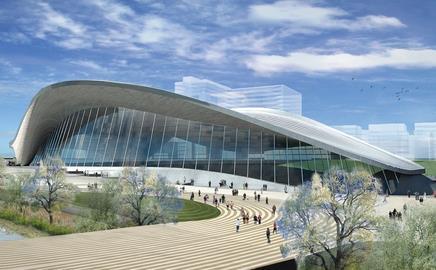Distinctive roof of Zaha Hadid-designed pool could be timber rather than steel to cut costs
Zaha Hadid’s Olympic aquatics centre is facing a third set of design cutbacks, it has emerged.
Project insiders say the distinctive wave-form roof designed by Hadid could now be built using timber instead of steel to drive costs down.
Talks over the change have come after the design of the roof was twice put through a value engineering process amid concerns about the construction programme’s budget.
The pool itself is likely to be built out of stainless steel, understood to be a first for an Olympic pool. As a result, the client and the sole remaining bidder, Balfour Beatty, are looking to minimise the use of steel elsewhere in the structure. This is understood to be a key reason why Eiffel, a steel contractor, dropped out of the running for the project. It is also thought to have contributed to Hochtief’s decision to pull out.
Balfour Beatty is now working with partners to value engineer the project to an acceptable cost.
John Armitt, the chairman of the Olympic Delivery Authority, told the London Assembly last week that it was too early to give a final budget for the aquatics centre, but said the cost of building the Olympic stadium was now £496m, compared with £216m in the original bid.
A project source said: “Changing the material from steel to timber has been discussed. The roof has been changed twice already and now this is being looked at a third time. It is really frustrating for everyone involved.”
Hadid scaled back the design in November 2006, cutting the size of the roof by almost a third.
An ODA spokesperson said: “A position has not been taken on what materials will be used for the construction of the aquatics centre. It is a decision that will be made with the contractor when the bidding is finalised.”
Sink or swim: the aquatics centre saga
February 2005 Zaha Hadid wins aquatic centre design competition
November 2006 Hadid scales back roof size by one third
June 2006 Bidders asked to reduce design costs further
Postscript
Lee McIntire, president of CH2M Hill, has replaced Ray O’Rourke as chairman of Olympic delivery partner CLM. The role will rotate on an annual basis.




























1 Readers' comment